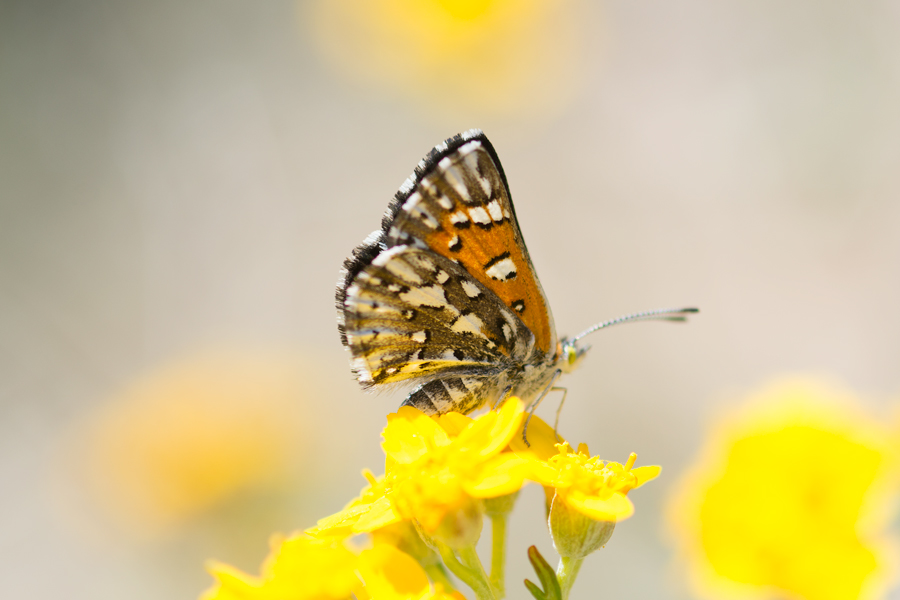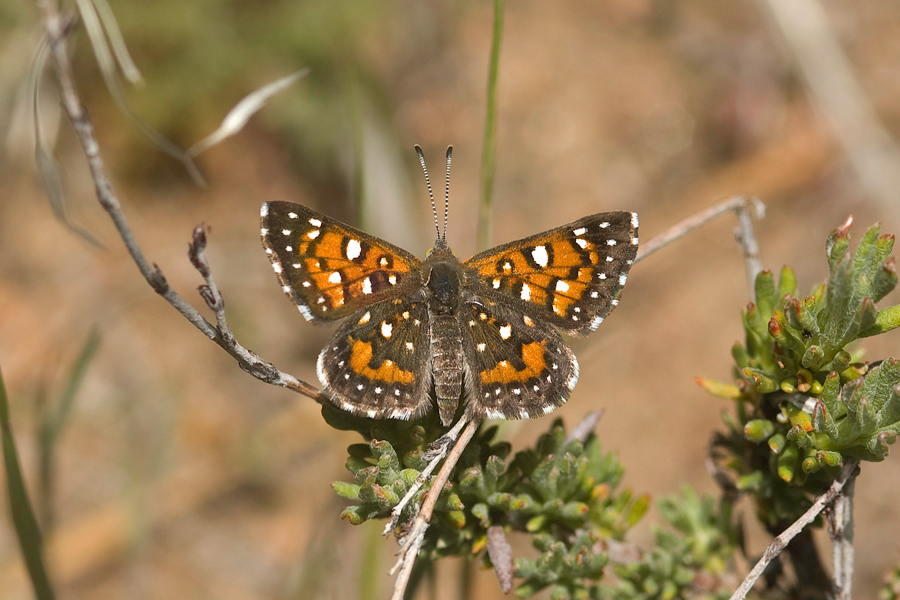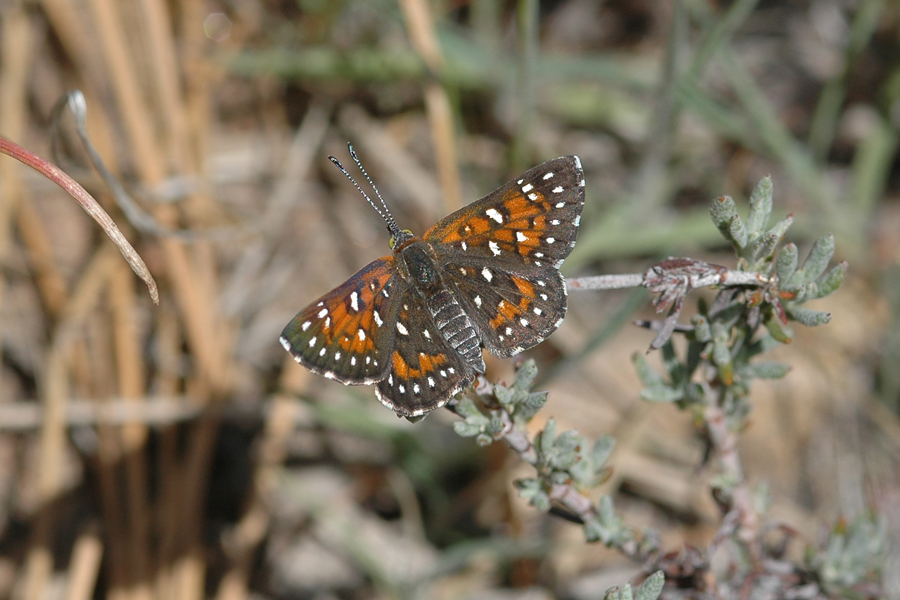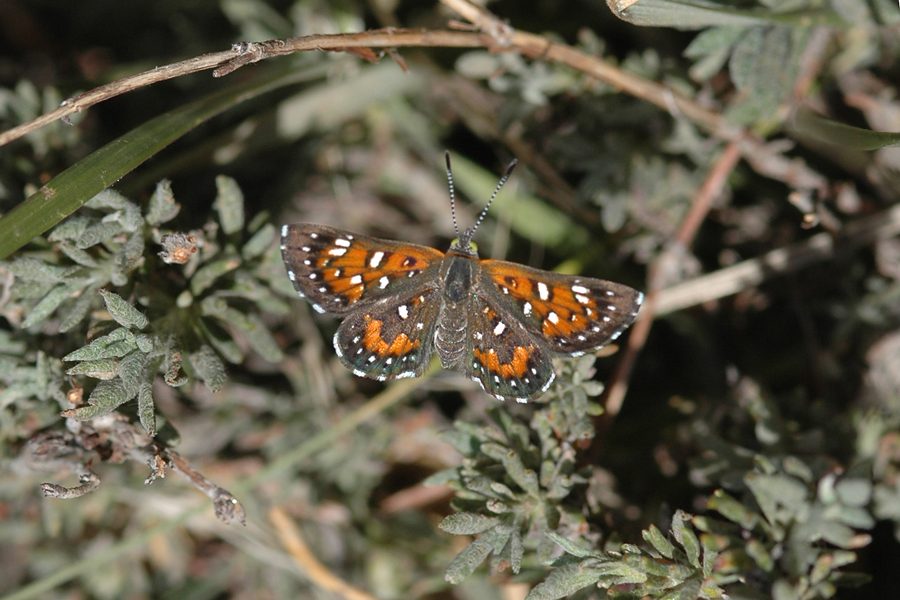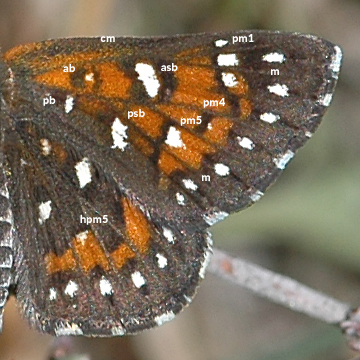Apodemia virgulti peninsularis
Peninsular Metalmark
The subspecies that was given the name peninsularis in the 1998 Systematics publication probably deserves full species status. It flies in a single brood, mid-April through June, in the Laguna Mountains (the type locality) and parts of the San Jacintos (e.g. Alvin Meadows). Its sole larval food plant is Eriogonum wrightii ssp. membranaceum, even when Eriogonum fasciculatum is available. In fact, there are said to be some overlaps of the ranges of peninsularis and Apodemia virgulti virgulti where the latter is using California buckwheat.
As a spring-flying member of the mormo complex, one expects relatively small eggs that hatch in a week or two, then a very long larval development time (perhaps 6-7 months), leading to pupation and adult emergence the next spring. DNA work has thus far confirmed that this subspecies and virgulti are not the same. Identifying areas of sympatry with use of different buckwheats, complemented by thorough DNA testing, would presumably open the way to full species status for this butterfly.
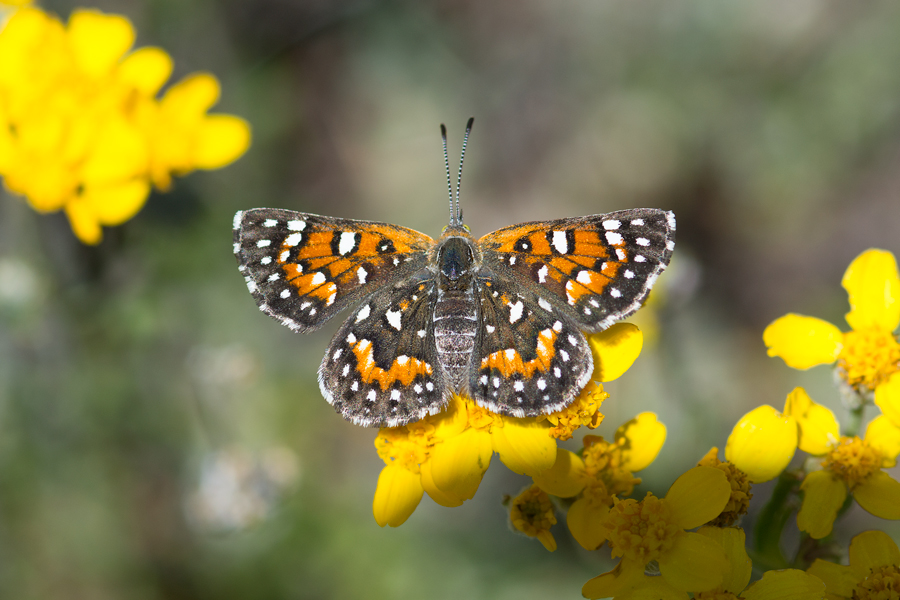
Apodemia virgulti peninsularis in the Laguna Mountains along Kitchen Creek Road. May 3, 2014.
Another Apodemia virgulti peninsularis from the same day. These were plentiful wherever there was Wright's buckwheat.
Apodemia virgulti peninsularis in the Laguna Mountains along the Big Laguna trail. April 25, 2011.
This peninsularis and the one below were flying early in a large patch of Wright's buckwheat, their larval host, in the Laguna Mountains along the Big Laguna trail. April 17, 2008.
Apodemia virgulti peninsularis, the Peninsular metalmark. Note the almost total absense of white spots in the hind wind postmedian orange area, and the reduced basal white spots on the forewing close to the thorax. (Same day as above.)
Wing characters
While the members of the mormo complex are organized according to several criteria, including variation in the timing of broods, choice of host plants, diapause strategies, egg size, and larval development, wing characters can also be a factor, and tend to be given a lot of attention. Below, I've placed a close-up photo of a wing next to descriptions from (or based on) the original descriptions of this subspecies. It isn't always possible to identify a metalmark based on what it looks like (to say the least), but that can be a consideration along with where you are, the time of year, and the buckwheat plants the butterfly was associated with. For this subspecies, in the field I tend to look first at what are labelled below "ab" and "pb" on the forewing. These two reduced basal white spots have always been a good, consistent character in my experience.
A. virgulti peninsularis was described (as a mormo subspecies) by John and Tom Emmel and Gordon Pratt in Systematics, pp.805-6:
Ground color: "brownish-orange to pale dull orange."
cm: Costal margin has "dark gray scaling fused posteriorly into the orange ground color."
ab, pb: anterior and posterior basal white spots greatly reduced.
asb, psb: anterior subbasal and posterior subbasal white spots reduced, and posterior subbasal spot is about 1/2 the size of the anterior spot.
pm: postmedian row of white spots reduced, and spots 1, 4 and 5 greatly reduced or nearly absent.
m: marginal series small, reduced to specks in some specimens.
hpm5: hind wing postmedian series sometimes almost entirely absent, with 5th spot usually the most prominent.
©Dennis Walker

